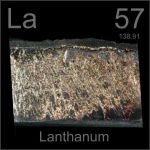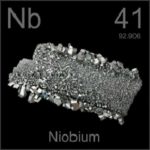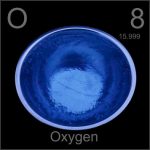Chemical Formula: LaNbO3
Catalog Number: ST0162
CAS Number: 12315-89-8
Purity: >99.9%
Shape: Discs, Plates, Column Targets, Step Targets, Custom-made
The lanthanum niobium oxide sputtering target is available in various forms, purities, sizes, and prices. Stanford Advanced Materials (SAM) offers high-quality lanthanum niobium oxide sputter targets at the most competitive prices.
Lanthanum niobium oxide sputtering target from Stanford Advanced Materials is an oxide sputtering material containing La, Nb and O.
 Lanthanum, a soft, malleable, silvery-white white metal, is one of the most reactive rare earth elements. It can be utilized to make special optical glasses and can also be utilized to make steel more malleable. In addition, lanthanum is helpful in wastewater treatment and oil refining. Scientists have given the name of “super calcium” to Lanthanum due to its application of photoconversion film.
Lanthanum, a soft, malleable, silvery-white white metal, is one of the most reactive rare earth elements. It can be utilized to make special optical glasses and can also be utilized to make steel more malleable. In addition, lanthanum is helpful in wastewater treatment and oil refining. Scientists have given the name of “super calcium” to Lanthanum due to its application of photoconversion film.
Related Product: Lanthanum Sputtering Target
 Niobium is a silver-colored metal that is generally found in conjunction with tantalum, the two elements being separated by fractional crystallization of their respective fluoro-complexes. It has an abundance of 20 ppm in the earth’s crust. As a pure metal, it is very reactive and forms an extremely stable oxide when exposed to air which enhances its corrosion resistance. Niobium will react with a variety of non-metals at elevated temperatures.
Niobium is a silver-colored metal that is generally found in conjunction with tantalum, the two elements being separated by fractional crystallization of their respective fluoro-complexes. It has an abundance of 20 ppm in the earth’s crust. As a pure metal, it is very reactive and forms an extremely stable oxide when exposed to air which enhances its corrosion resistance. Niobium will react with a variety of non-metals at elevated temperatures.
Related Product: Niobium Sputtering Target
 Oxygen is a chemical element that originated from the Greek ‘oxy’ and ‘genes’ meaning acid-forming. It was first mentioned in 1771 and observed by W. Scheele. The isolation was later accomplished and announced by W. Scheele. “O” is the canonical chemical symbol of oxygen. Its atomic number in the periodic table of elements is 8 with a location at Period 2 and Group 16, belonging to the p-block. The relative atomic mass of oxygen is 15.9994(3) Dalton, the number in the brackets indicating the uncertainty.
Oxygen is a chemical element that originated from the Greek ‘oxy’ and ‘genes’ meaning acid-forming. It was first mentioned in 1771 and observed by W. Scheele. The isolation was later accomplished and announced by W. Scheele. “O” is the canonical chemical symbol of oxygen. Its atomic number in the periodic table of elements is 8 with a location at Period 2 and Group 16, belonging to the p-block. The relative atomic mass of oxygen is 15.9994(3) Dalton, the number in the brackets indicating the uncertainty.
Related Product: Oxide Ceramic Sputtering Target
1. Indium Bonding is recommended for lanthanum niobium oxide sputtering target, due to some of its characteristics not amenable to sputtering like brittleness, low thermal conductivity, etc.
2. This material has a low thermal conductivity are susceptible to thermal shock.
The lanthanum niobium oxide sputtering target is used for thin film deposition, decoration, semiconductor, display, LED and photovoltaic devices, functional coating as nicely as other optical information storage space industry, glass coating industry like car glass and architectural glass, optical communication, etc.
Our lanthanum niobium oxide sputter targets are tagged and labeled externally to ensure efficient identification and quality control. Great care is taken to avoid any damage which might be caused during storage or transportation.
High-quality lanthanum niobium oxide sputtering target is available in various forms, purities, sizes, and prices. We specialize in producing high purity thin film coating materials with the highest possible density and smallest possible average grain sizes. Please send us an inquiry for the current prices of the sputtering targets and other deposition materials that are not listed.
Submit your review | |
1 2 3 4 5 | |
Submit Cancel | |
I got many from SAM for our chemistry lab and we use them for sputter deposition experiments. They're great for chemical projects and science for the students.